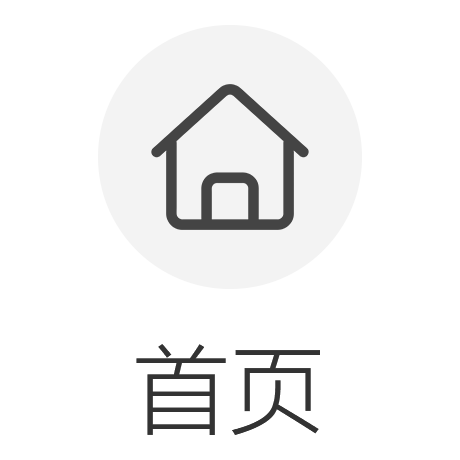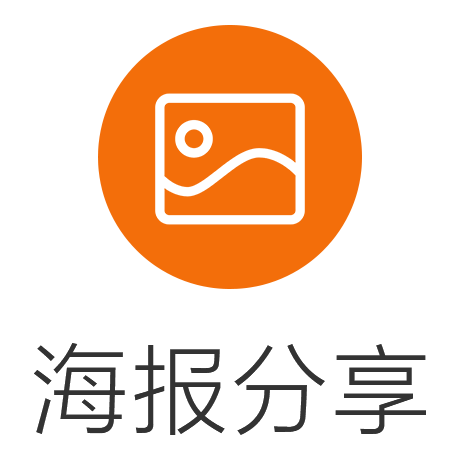西鐵塔
The West Iron Pagoda
西鐵塔築于南漢大寶六年(963),由南漢後(hòu)主劉鋹(chǎng)的太監與其弟子出資鑄造。這(zhè)座鐵塔初成(chéng)時(shí),全塔塗以金箔,因此有“塗金千佛塔”之稱。其塔基爲石刻蓮花底座。塔身上的盤龍紋飾,則有敦煌飛天的造型風格。
The West Iron Pagoda was built in 963 A.D. or the sixth year of Dabao Reign of the Southern Han Dynasty. It was donated by the emperor's eunuch and his disciple.In the early time after its construction, it was fully covered with gold foil. That's why it was called "Gilded Pagoda of One Thousand Buddhas".It has a stone-carved lotus base with dragon ornaments on the body part that resemble the style of flying Apsaras in Dunhuang.

塔身四面(miàn)1000尊浮雕小佛像,又都(dōu)充分彰顯出唐代遺風。這(zhè)座原高6.5米的鐵塔,從蓮花底座往上,原有7層方形塔身。可惜,在清代順治年間曾有一部分毀于炮火。抗戰時(shí)期又因台風吹塌房屋,壓壞了4層,現僅存底座以上的3層。另外,原來曾有一座塔殿覆蓋在鐵塔之上,稱爲西塔殿。
There are 1,000 small reliefs of Buddhas on four sides of the pagoda with a prominent style of the Tang Dynasty.Above the base of lotus, there used to be a quadrular body part, 6.5 meters in height, with 7 stories.Unfortunately, it was partially damaged by gunfire during the Reign of Emperor Shunzhi in the Qing Dynasty.And during the Anti-Japanese War, four stories were crushed by a falling building in a typhoon. Only three stories above the base have been preserved till this day.Besides, there used to be a hall housing the pagoda, called the Hall of West Pagoda.

東鐵塔
The East Iron Pagoda
光孝寺現存的另一座東鐵塔,在東塔殿内,形制與西鐵塔相同,然而更加完整。這(zhè)座東鐵塔,是南漢後(hòu)主劉鋹在西鐵塔建成(chéng)4年之後(hòu),即南漢大寶十年(967),令内侍監李托奉敕監鑄。
Here in this hall stands the East Iron Pagoda. Similar to the West one in structure, this pagoda, however, is undamaged.It was built four years later after the completion of the West Iron Pagoda under the command of Liu Chang, the last emperor of Southern Han Dynasty in the year 967A.D..He ordered Li Tuo, the official of imperial palace service, to supervise the casting.
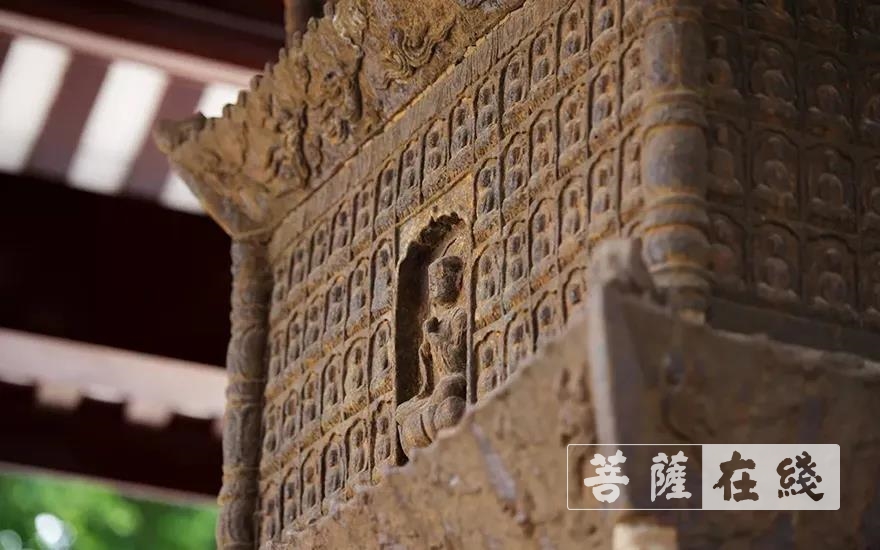
塔高6.35米,造型與西鐵塔相似:塔基的蓮花底座上有精美的二龍戲珠紋飾,下有石刻須彌座。七層方形塔身上,那些千佛浮雕像也與西鐵塔相仿,可證這(zhè)塔确是仿照西鐵塔建造的。
It is 6.35 meters high and similar in shape to the West Iron Pagoda: its lotus base is decorated with exquisite patterns of two dragons playing with a pearl, under which is a stone-carved Sumeru base. There are also 1,000 mid-relief Buddha statues on the 7-story quadrangular body part, proving that this pagoda was indeed modeled after the West one.

不過(guò),這(zhè)個東鐵塔佛龛内的小佛像的工藝不僅更爲精緻,而且還(hái)帶有鮮明的異域風格,屬于中印藝術風格的合璧之作。要說(shuō)它與西鐵塔略有不同處,就(jiù)是它的每層塔檐多了一層專刻龍紋。東鐵塔保留較爲完整,這(zhè)個塔殿曆代多有重修,現存塔殿爲清乾隆二年(1737)重修的。
However, the craft of the small Buddha statues in the niches of this pagoda is more exquisite, with a distinctive exotic style out of an integration of Chinese and Indian artistic features. And what makes it substantially different from the West Iron Pagoda must be the unique carved dragon patterns on the eaves of each storey .The East Iron Pagoda remains relatively intact, and its hall has been rebuilt over the ages. The existing hall was rebuilt in 1737 or the second year of the reign of Emperor Qianlong in the Qing Dynasty.
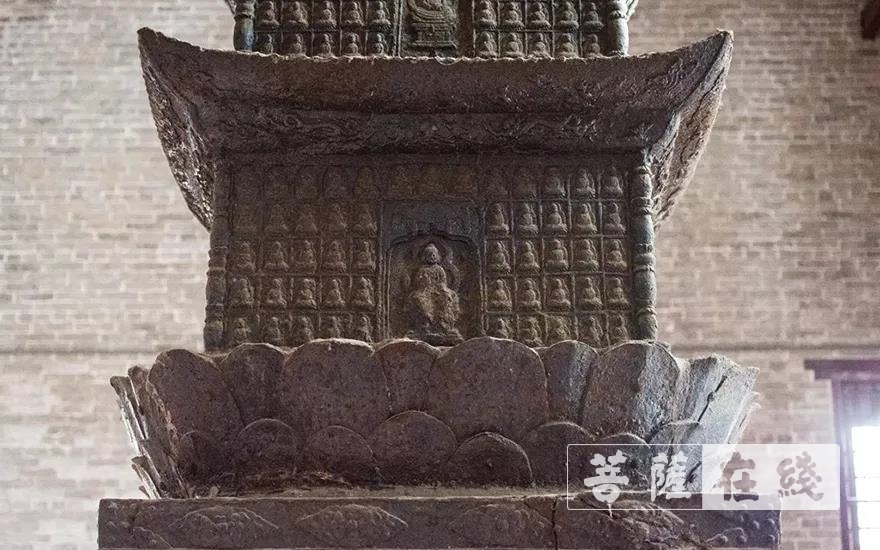
光孝寺保存的這(zhè)兩(liǎng)座鐵塔的鑄工非常精緻,證明了一千年前中國(guó)人已掌握了高超的鑄造技術和造型藝術,其設計特色,又印證了中國(guó)文化深受外來文化的影響,并不斷將(jiāng)其融入本土文化中。
The two iron pagodas are delicate in casting and modeling, two technologies well applied by the Chinese for more than one thousand years ago.The design of these Buddhist relics shows how Chinese culture was deeply influenced by external cultures and also how, in turn, it localized them.
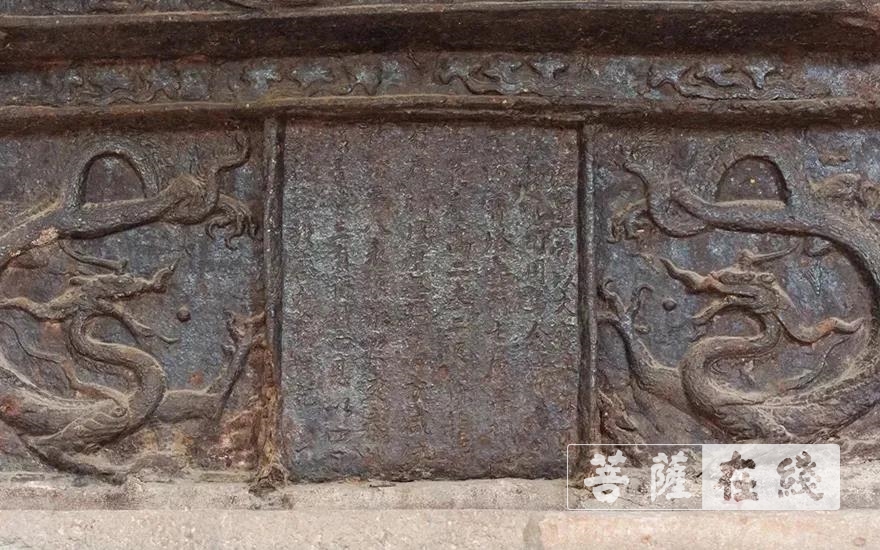
東鐵塔殿内碑刻
Inscriptions in the Hall of East Iron Pagoda
在東塔殿内,還(hái)保存有一批宋至清的碑刻,其中有一些碑刻内容直接反映了中外文化的交流。比如:明萬曆四十年(1612)的《光孝寺重修六祖菩提碑記》。
Inside the Hall of East Iron Pagoda, there are a number of inscriptions from the Song Dynasty to the Qing Dynasty, some of which have recorded cultural exchanges between China and foreign countries.For example, on the stele there is the Inscription on the Restoration of the Sixth Patriarch's Bodhi at Guangxiao Temple, which was carved in 1612 or the 40th Year of the Wanli Reign in the Ming Dynasty.
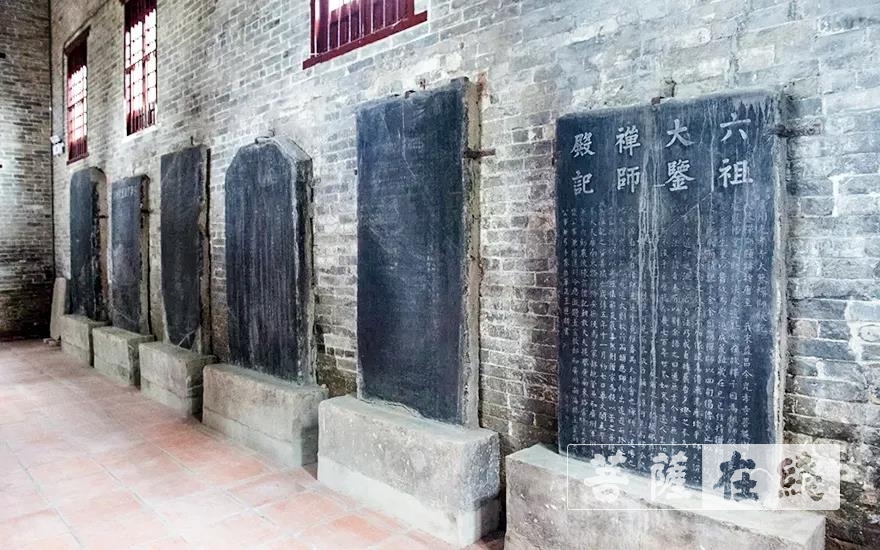
在碑的上端,刻有講涅槃經(jīng)法師印宗和住持比邱法才共同撰寫的碑文,下端,則刻有菩提樹圖。碑文記述了求那跋陀羅法師、智藥三藏兩(liǎng)位高僧航海而至廣州,在法性寺建戒壇、植菩提樹,以及之後(hòu)六祖惠能(néng)論風幡、講法、剃發(fā)的過(guò)程。
At upper end of the stele, there is an inscription written by Yinzong, a Master who lectured on the Nirvana Sutra, and Facai, the abbot of the temple. At the lower end, there is an engraving of the Bodhi tree.The inscription describes how Gunabhadra and Zhiyao Sanzang sailed to Guangzhou to build the ordination platform and plant the Bodhi tree at the Temple, and how Huineng, the Sixth Patriarch responded to the Flag-or-Wind Argument, taught the Dharma and received ordination at the temple.
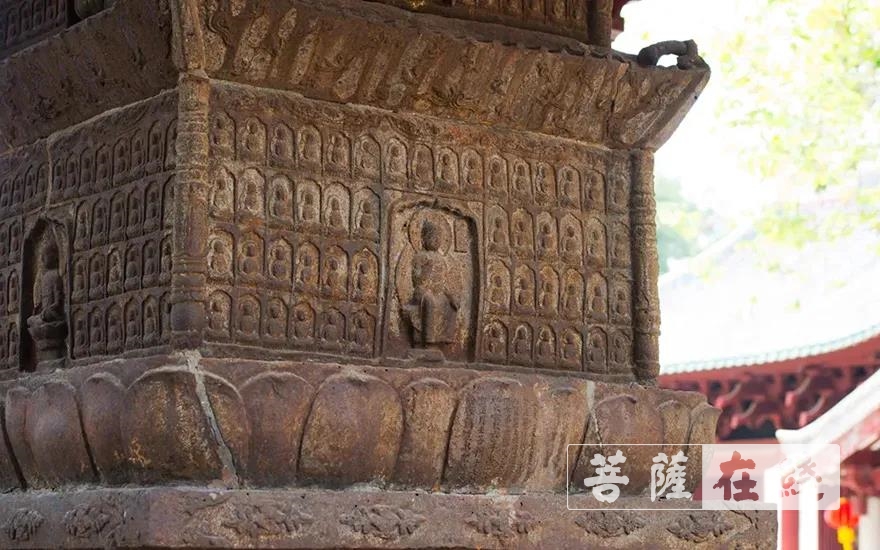
這(zhè)一塊塊碑刻,記載著(zhe)光孝寺的各大重要曆史事(shì)件,在文化和藝術上都(dōu)具有極高的價值,值得我們好(hǎo)好(hǎo)珍惜。
These stelae are worth cherishing for their great cultural and artistic value as well as their recorded information on the temple's major historical events.


